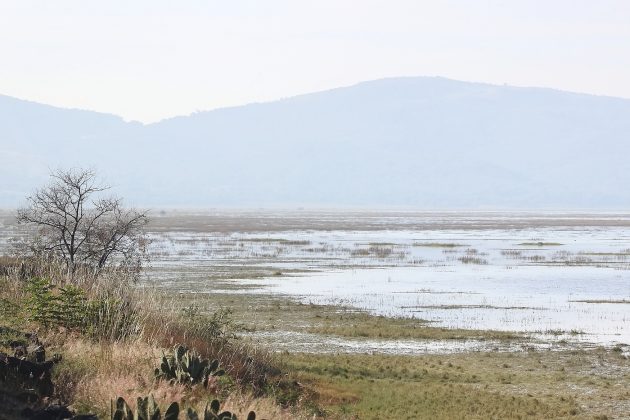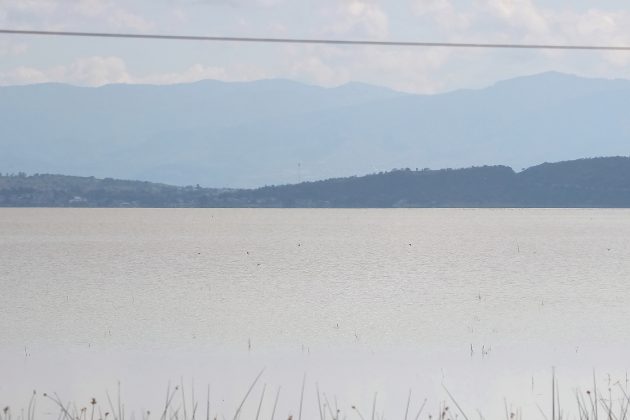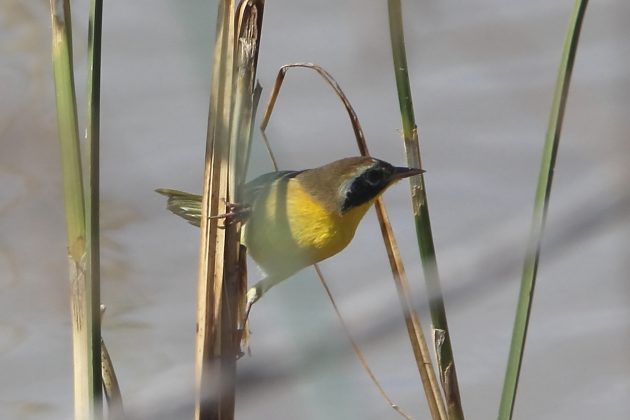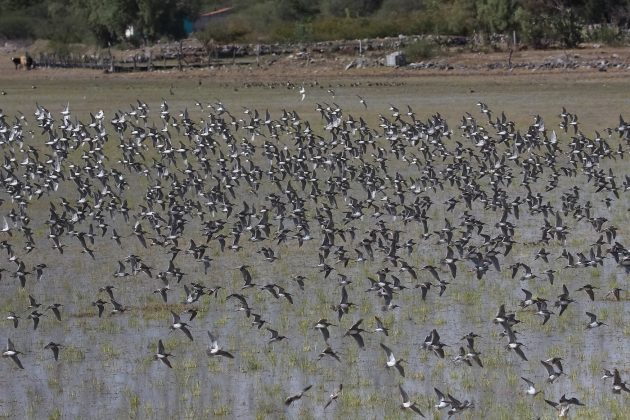
I am a man obsessed. Ever since our nearby Lake Cuitzeo, a major wintering grounds for all sorts of waterfowl and shorebirds, dried up for most of last year, I have been obsessed with the possibility of its recovery following our very successful 2024 summer rainy season.
That is why the the lake was the last place I visited before our recent work trip to Europe and northern Africa, and the first place I visited upon our return last week. Just before that trip, the western side of the lake still had a long way to go. Now, in mid-November, that western side shows more and more water, and less grass. The eastern side has almost reached its maximum possible depth, and water continues to flow westward beneath the two highways that cross the lake. Will it reach full capacity before spring, or will the western side dry up again in April and May, as it often does? Time will tell.

west side

edge of west side

east side
Last year, with only the slightest amount of water remaining in the eastern lake, almost none of the hundreds of thousands of ducks that normally depend on this crucial wintering ground were to be found there. A few ducks did turn up in the most unlikely bodies of water that remained elsewhere in our region. But I would love to know where the vast majority went. Did they fly beyond central Mexico, or to the Mexican coast? Would they come back to our lake this year, or did they find new permanent wintering grounds? Or, worst-case scenario, did they die from lack of their normal wintering habitat? This final doubt caused me to visit the lake now, with my heart in my hand.
The good news, as of November 18th, is that I did see all the species I would normally expect to find there in a normal November: resident Fulvous Whistling Ducks, Mexican Ducks, and Ruddy Ducks; and migratory Blue-winged, Cinnamon, and Green-winged Teals, Northern Shovelers, and Northern Pintails. The bad news is that their numbers seemed low, especially for the Northern Shovelers and Pintails, which would normally be seen in the hundreds or more. (It’s a bit too early in the season to see our other common winter ducks: Gadwalls, American Wigeons, Canvasbacks, and Redheads.)

Northern Shovelers — but not by the hundreds –, a Northern Pintail, and a Green-winged Teal, plus a Black-necked Stilt.

Blue-winged Teals

I was surprised to see Fulvous Whistling Ducks caring for ducklings in November.
Still, there could be a more hopeful interpretation for these low duck numbers. Lake Cuitzeo is vast, and as it fills, habitat options for birds become many. Birds may move around this lake as its water levels constantly change. During the drought, most of its reedbeds burnt, and their uneven but steady recovery also causes birds to move around to find their ideal spot for each moment. More abundant deep-water options probably explained why I only saw a single Clark’s Grebe this trip. And reedbed recovery probably explained why I saw many Marsh Wrens and Common Yellowthroats, but no micro-endemic Black-polled Yellowthroats. (These are normally a difficult find on Lake Cuitzeo, even though the site is one of only three wetlands in the world with a population of this species).

Common Yellowthroat
It seemed that the story for shorebirds would be similar to that of waterfowl, with all common species present, but in much smaller numbers. But as the day went by, and I moved to different spots on the lake, I gradually found more and more shorebirds. After noon I was treated to the spectacle of enormous clouds of shorebirds flying relatively closeby. Long-billed Dowitchers, Stilt Sandpipers, Lesser Yellowlegs, Western Sandpipers, and Least Sandpipers were most common. Some of the lake’s resident Black-necked Stilts and American Avocets joined the party. There was an unexpected contingent of Wilson’s Phalaropes, a species that has usually moved further south by this time. Six other shorebird species (plovers and sandpipers) were also seen on this outing.

So many Long-billed Dowitchers and Stilt Sandpipers

So, so many Long-billed Dowitchers

So, so, so many Long-billed Dowitchers


And some Wilson’s Phalaropes among the Dowitchers
Every trip has its highlights, and this time it was a pair of Long-billed Curlews, not all that difficult but always spectacular, and a single Aztec Rail which shocked me by furtively walking just below the highway. As the “Aztec” suggests, this bird is a Mexican endemic. And as the “Rail” suggests, it is a very hard bird to see.

Long-billed Curlew (lots of long-bill action happening here)


Aztec Rail

American Bitterns are also on the hard-to-see list. And they are almost always seen flying away.

I was also very happy to see a good-sized water snake acting very much alive, as I had seen far too many of these dead on last year’s dry lakebed.

In the end, I saw 64 species this day. That’s a good total for a day in which I did not significantly explore the terrestrial habitats surrounding the lake. In December-February, with a friend or two by my side, and spending time in those dry woods, it’s possible to see more than 100 species in a single day around Lake Cuitzeo. And now that I have confirmed the lake’s continuing recovery, I have high hopes for our upcoming first Annual Christmas Count there.













Glad to hear that. Everbody desperately needs good news after Trump’s reelection …
Yet another excellent reason to live in Mexico.
It would be really interesting to see if the drought worked as a reset. Will you be seeing different species or a different number of individuals per species? I know they let the Oostvaardersplassen (https://www.10000birds.com/oostvaardersplassen.htm) partially dry out just to achieve such a reset.